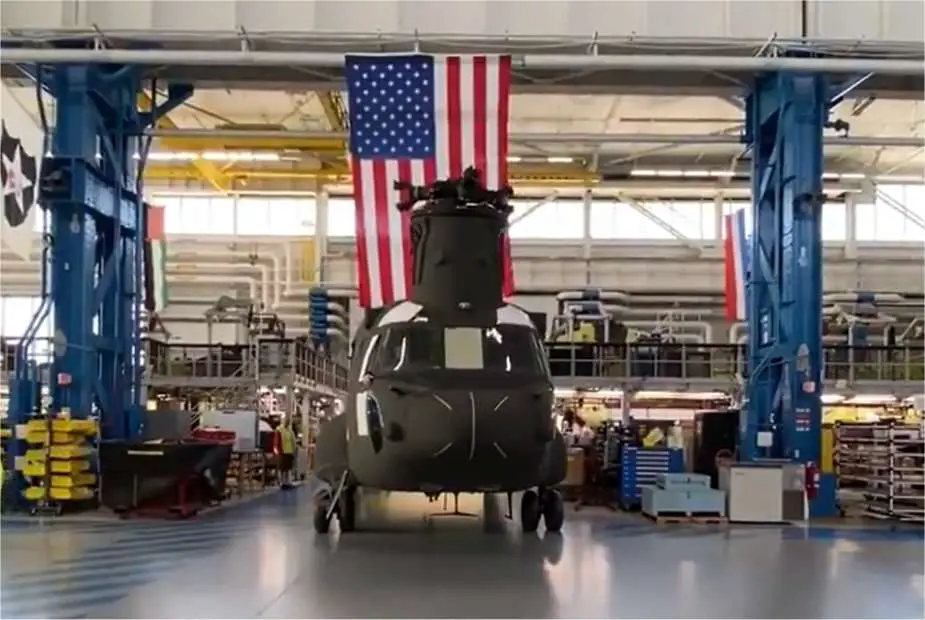The first production model of the U.S. Army's CH-47F Block II helicopter has reached a significant milestone by entering the final assembly phase at Boeing's Philadelphia factory. This phase signifies the completion of the production process before the helicopter is delivered to the U.S. Army, expected in early 2024.
Follow Army Recognition on Google News at this link

Boeing announced that the first CH-47F Block II model destined for the U.S. Army had entered the final assembly phase. (Picture source: Boeing)
Boeing announced on March 26, 2024, via their X account, that the first CH-47F Block II model destined for the U.S. Army had entered the final assembly phase, indicating that delivery is imminent.
The CH-47F Block II is an evolution of the renowned Chinook helicopter family, designed to meet modern heavy-lift transport and extreme condition operation requirements. Implemented in 2020, Block II aims for a payload capacity of 22,000 pounds (approximately 10,000 kg), while maintaining optimal hover performance in challenging conditions, specifically at altitudes of 4,000 feet (1,200 m) in temperatures reaching 95 °F (35 °C). The long-term goal is to enhance this hover performance to altitudes up to 6,000 feet (1,800 m), thereby enabling the transport of Joint Light Tactical Vehicles. To support this increase in capabilities, the maximum takeoff weight would be raised to 54,000 pounds (24,500 kg).
At the heart of the Block II improvements are the 20% more powerful Honeywell T55-715 engines. These engines, combined with an active parallel actuator system (APAS), enhance the digital advanced flight-control system, ensuring an exact torque split between the rotors for greater efficiency. The fuel system has also been redesigned, consolidating the three fuel cells in each sponson into one larger cell, reducing weight by 90 kg (200 pounds) and increasing fuel capacity. Electrical capacity has been increased with the addition of three 60 kVA generators.
The Advanced Chinook Rotor Blades (ACRB), derived from the canceled RAH-66 Comanche project, were intended to improve lift performance in hot/high altitude conditions by 2,000 pounds. However, the U.S. Army decided against implementing the ACRB due to persistent vibration during testing. Boeing contested the notion that these vibrations posed a safety risk and believed a solution could be found with dampeners. It was also noted that the aft rotor blade tended to stall when in a swept-back position.
Boeing has emphasized the efficiency and reliability of the CH-47F Block II program, highlighting its rapid progression from contract award to final assembly. This new generation of aircraft is expected to provide enhanced capabilities to the U.S. Army, aiding in addressing evolving global threats. The program's advancements also aim to increase commonality between U.S. and allied fleets, potentially resulting in reduced maintenance costs and improved operational efficiency.















